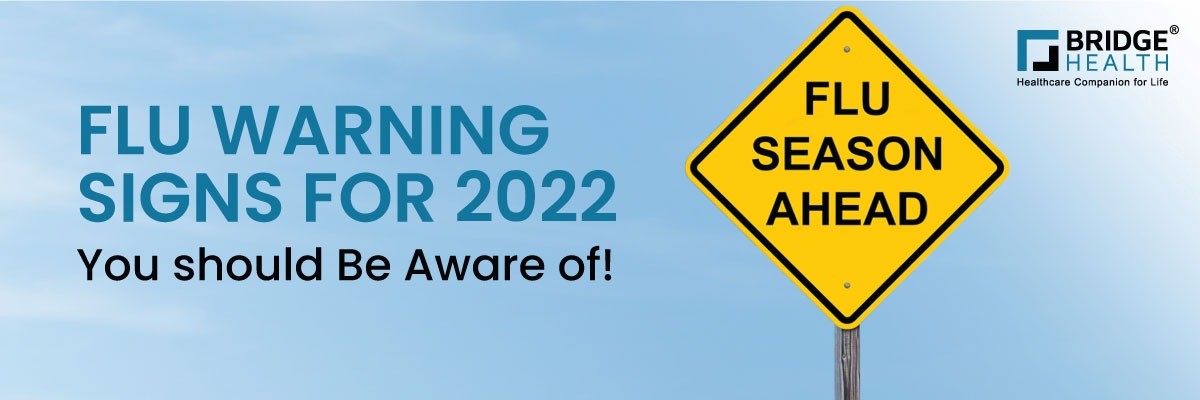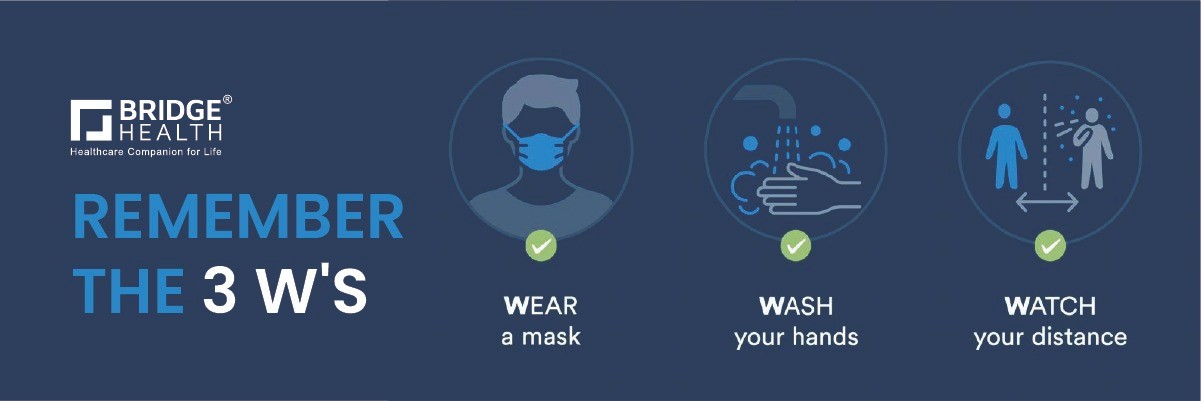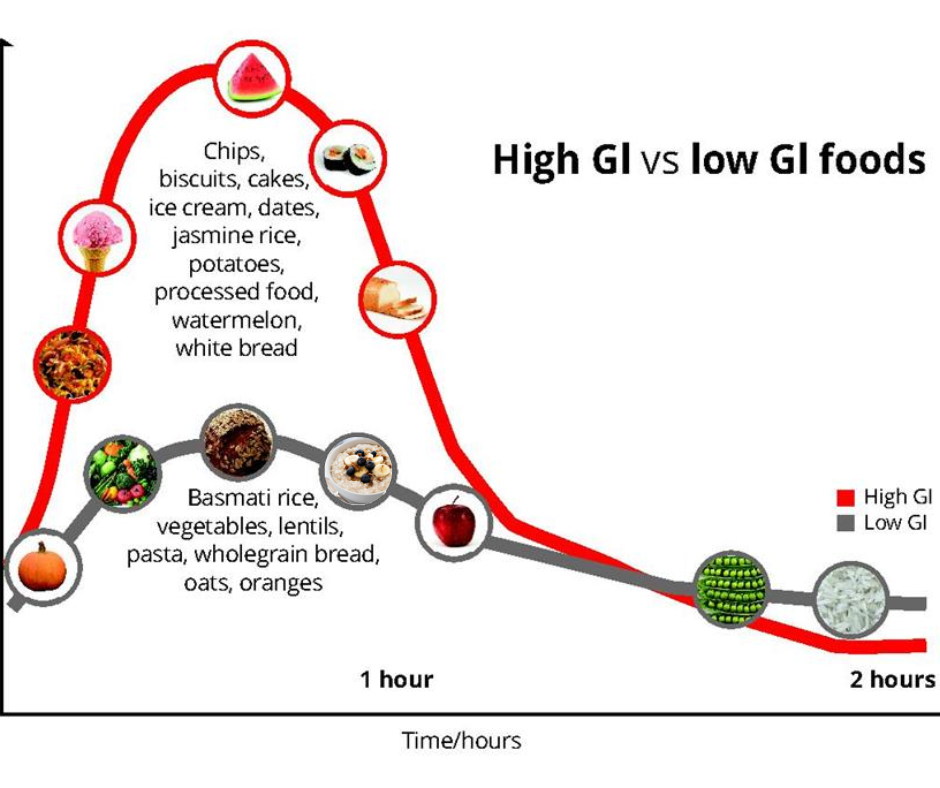1. Misconceptions associated with influenza and the truth behind them. (Part3)

Is the influenza vaccination advised for all travellers?
NO
Then
Which travelers are recommended to get influenza vaccine?
Any person who is planning to travel, failed to get vaccinated in the previous vaccination season. Recommendations for influenza vaccination of people who have already become ill with influenza during the season. More than one type or subtype of influenza virus can circulate in any given influenza season. Hence vaccination to unvaccinated people throughout the influenza season must be considered. Including people who may have had an influenza illness already in the season.
How long does immunity from influenza vaccine last?
Protection from influenza vaccine wanes over time post-vaccination but generally persists for at least 5-6 months. Every year, it's recommended to get a flu shot, and the best time to do so is at the tail end of October.
The flu shot is designed to protect people from the flu for at least six months. However, research has shown that in people aged 65 and over, the effects of the vaccine may start to wear off sooner than usual. This is because as people age, their immune response to vaccines tends to weaken. As a result, older people are more susceptible to severe illness than younger people.
Healthcare professionals typically vaccinate most people in October, when flu activity typically increases. This ensures that their immunity will last until the following April.
MISCONCEPTIONS
MYTH : All People who are Vaccinated develop flu like symptoms.
FACT : Less than 1% of people who are vaccinated with the injectable vaccine develop flu-like symptoms
MYTH : Vaccines can be harmful and may have negative effects on health.
FACT : These side effects are not the same as having influenza. While most people don't experience any serious side effects from getting a flu vaccine, some may feel soreness, fever, muscle pain, and general discomfort or weakness for 1-2 days after the injection. These side effects are usually much less severe than the actual flu illness and typically go away relatively quickly. The risk of a flu vaccine causing serious harm or death is incredibly small. In fact, millions of people in the US and around the world safely receive flu vaccines every year.
MYTH : Every year, a flu shot is not essential.
FACT : Protective immunity doesn't develop until 1–2 weeks after vaccination. The immunity you get from the flu vaccine declines over time, so it's important to get vaccinated every year. The vaccine may be different each year, so it's important to get vaccinated each year to match the flu viruses that are going around.
MYTH : Vaccinated people do not get infected
FACT : People who get vaccinated later in the season (December or later) may be infected with influenza virus shortly afterward. These late vaccines develop influenza because they were exposed to someone with the virus before they became immune.If they get any viral illness, they may blame it on flu vaccine or think they got "the flu" despite being vaccinated.
MYTH : Vaccinated other viral infection will not occur.
FACT : Influenza vaccine only protects against certain influenza viruses, not all viruses.
MYTH : Influenza vaccine is 100% Protactive.
FACT : Influenza vaccination is our best protection against influenza disease; however, some people who are vaccinated will still get influenza illness despite vaccination
Connect with @BridgeHealth, and stay up to date on Holistic health, medical advancements, Preventive healthcare tips and current health & wellness topics. We appreciate you taking the time to read our blog; please share your comments below
Written by: Dr. Vedavathi N
Consultant Physician – Bridge Health
2. Increase your Right IQ on flu shots (Part2)

Overview
The four influenza viruses that, according to studies, will be most prevalent throughout the following season are the target of influenza vaccinations, sometimes known as "flu shots." The majority of flu vaccinations are administered with a needle, often in the arm, although there is also a nasal spray vaccine available.
Influenza (flu) vaccines - often called “flu shots”
Vaccines that protect against the four influenza viruses
Most flu vaccines are “flu shots” given with a needle, usually in the arm,
But there also is a nasal spray flu vaccine.
Types of Influenza Vaccine:
There are 2 basic types of influenza vaccine:
Inactivated influenza vaccine (IIV)
Live-attenuated influenza vaccine (LAIV)
Inactivated influenza vaccines (IIV)
The viruses included in these vaccines are inactivated so they do not cause influenza, although minor side effects may occur including local reactions at the injection site.
IIV is approved for
Use in persons 6 months and older,
Pregnant women
Persons with chronic medical conditions.
IIV is given as
One dose, injected into the deltoid thigh or muscle.
Influenza vaccination in pregnancy will protect both the mother and her new-born against influenza.
Live attenuated influenza vaccines (LAIV)
Made from attenuated, or weakened, viruses
Can cause mild signs or symptoms
Including rhinorrhoea, nasal congestion, fever or sore throat.
LAIV is approved for
Use only in persons aged 2–49 years who do not have underlying medical conditions.
The vaccine should, however, not be administered to pregnant women.
LAIV is given
As a nasal spray, 1 dose only
Bt children aged 2–8 years who have not received seasonal influenza vaccine during the previous influenza season should receive 2 doses, at least 4 weeks apart.
DOSE OF VACCINE
The influenza vaccine is given yearly.
For IIV, the dose is :
0.25 ml or 0.50 ml IM for children aged 6 to 35 months
0.5 mL IM for people ≥ 3 years
0.1 mL ID for people aged 18 to 64 years,
Children aged 6 months to 8 years who have received fewer than 2 influenza vaccine doses or whose influenza vaccination history is unknown should receive 2 doses, separated by at least 4 weeks.
For LAIV, the dose is 0.1 Ml sprayed into each nostril (the total dose is 0.2 mL).
For RIV4, the dose is: 0.5 mL IM.
{given intradermally}
PREPARATIONS OF VACCINES
Afluria Quadrivalent, Fluarix Quadrivalent, FluLaval Quadrivalent, and Fluzone Quadrivalent
They are manufactured using virus grown in eggs
These vaccines are approved for use in children as young as 6 months.
Most flu shots are given in the arm (muscle) with a needle.
Afluria Quadrivalent can be given either with a needle (for people 6 months and older) or with a jet injector (for people 18 through 64 years only).
Flucelvax Quadrivalent
Containing virus is grown in cell culture,
This is approved for people 6 months and older.
This vaccine is completely egg-free.
Egg-based high dose flu shot
Fluzone High-Dose Quadrivalent
Approved for use in people 65 years and older.
This vaccine contains four times the antigen than other standard-dose inactivated flu vaccines,
Creates a stronger immune response.
Egg-based adjuvanted flu shot
Fluad Quadrivalent
This is approved for people 65 years and older.
This vaccine is made with an adjuvant (an ingredient that helps create a stronger immune response).
Recombinant flu shot
Flu Blok Quadrivalent
Completely egg-free flu shot that is made using recombinant technology
Approved for use in people 18 years and older.
This shot is made without flu viruses and contains three times the antigen than other standard-dose inactivated flu vaccines,
To help create a stronger immune response.
Egg-based live attenuated flu nasal spray vaccine
FluMist Quadrivalent
Made with attenuated (weakened) live flu viruses,
Which is approved for use in people 2 years through 49 years.
This vaccine is not recommended for use in pregnant people, immunocompromised people, or people with certain medical conditions.
VACCINE FOR > 65 YRS
Fluzone High-Dose Quadrivalent vaccine
Flu Blok Quadrivalent recombinant flu vaccine
Fluad Quadrivalent adjuvanted flu vaccine
VACCINE FOR CHILDREN
Four egg-based quadrivalent inactivated influenza vaccines (IIV4s)
Afluria Quadrivalent (Seqirus) : 0.25 mL/dose for age 6 through 35 months;
0.5 mL/dose for age 3 years and olderFluarix Quadrivalent (GSK) : 0.5 mL/dose for age 6 months and older
FluLaval Quadrivalent (GSK) : 0.5 mL/dose for age 6 months and older
Fluzone Quadrivalent (Sanofi) : 0.25 mL or 0.5 mL per dose for age 6 through 35 months;
0.5 mL/dose age 3 years and olderFlucelvax Quadrivalent (ccIIV4, Seqirus) cell-based vaccine (no egg antigen) : is 0.5 mL/dose (IM)
FluMist Quadrivalent (LAIV4, AstraZeneca) egg-based live nasal spray vaccine is 0.2 mL (intranasal, 0.1 mL in each nostril) for healthy, non-pregnant children age 2 years and older.
All given intramuscular (IM) injections, are available for children aged 6 months and older
VACCINE FOR ADULTS
VACCINE FOR ADULTS : 0.5 mL/dose
Fluarix Quadrivalent (GSK) : 0.5 mL/dose
FluLaval Quadrivalent (GSK) : 0.5 mL/dose
Fluzone Quadrivalent (Sanofi) : 0.5 mL/dose
Flucelvax Quadrivalent (ccIIV4, Seqirus) cell-based vaccine (no egg antigen) : 0.5 mL/dose (IM) for age 6 months and older.
Flu Blok Quadrivalent (RIV4, Sanofi): recombinant, egg-free vaccine : 0.5 mL/dose (given IM) for all adults age 18 years and older.
Flu Mist Quadrivalent (LAIV4, AstraZeneca): egg-based, live nasal spray vaccine is : 0.2 mL (given intranasally, 0.1 mL in each nostril) for healthy, non-pregnant adults through age 49 years.
Fluzone High-Dose Quadrivalent (egg-based HD-IIV4, Sanofi): 0.7 mL (given IM), for adults age 65 years and older.
Fluad Quadrivalent (egg-based aIIV4, Seqirus): 0.5 mL (given IM), for adults age 65 years and older.
Who all should get vaccine
Children aged 6 months through 4 years
People aged 50 years and older
People with chronic pulmonary diseases including asthma cardiovascular (except isolated hypertension), renal, hepatic, neurologic, hematologic, and metabolic disorders including diabetes mellitus
People who are immunosuppressed due to any cause || including immunosuppression caused by medications || human immunodeficiency virus (HIV) infection
People who are or will be pregnant during the influenza season and people up to two weeks after delivery.
People who are aged 6 months through 18 years: Who are receiving aspirin or salicylate-containing medications
People who are: Residents of nursing homes and other long-term care facilities
American Indian or Alaska Native persons.
People with extreme obesity: body-mass index [BMI] is 40 or greater
Health care personnel
Adults aged 50 years and older: with medical conditions that put them at increased risk for severe illness and complications from influenza
Who all should get vaccine
People who are aged 6 months through 18 years: who are receiving aspirin or salicylate-containing medications
People who are residents of nursing homes and other long-term care facilities
American Indian or Alaska Native persons.
People with extreme obesity: body-mass index [BMI] is 40 or greater
Health care personnel
Adults aged 50 years and older with medical conditions that put them at increased risk for severe illness and complications from influenza.
People who SHOULD NOT get a flu shot
Children younger than 6 months of age.
People with severe, life-threatening allergies to any ingredient in a flu vaccine (other than egg proteins)
People who have had a severe allergic reaction to a dose of influenza vaccine
People who should talk to their health care provider before getting a flu shot:
If you have an allergy to eggs or any of the ingredients in the vaccine.
If you ever had Guillain-Barré Syndrome — GB SYNDROME.
If you had a severe allergic reaction to a previous dose of any other flu vaccine
If you are not feeling well, talk to your doctor about your symptoms.
Nasal Spray
IDEAL TIME FOR VACCINE
September to end of October.
Should continue as long as influenza viruses are circulating and unexpired vaccine is available.
Early vaccination has been associated with decreased vaccine effectiveness
Vaccination in July and August should be avoided except in the following conditions || third trimester of pregnancy to allow time for protective maternal antibodies to transfer to the fetus
Children younger than 9 years old who need two doses of vaccine this season should receive their first dose as soon as possible so that they can get their second dose before the end of October.
Children who need only one dose also can be vaccinated in July or August.
Can other vaccines be given along with flu vaccine
Yes
Any vaccine may be given on the same day or any day before or after COVID-19 vaccination, at a different anatomic site.
IIV4 and RIV4 can be administered without regard to the timing of other live or inactivated vaccines.
Injectable vaccines should be administered in separate anatomic sites when given on the same day.
LAIV4 may be given on the same day as any other live or inactivated vaccines.
If two live vaccines are not given on the same day, they should be separated by at least 4 weeks.
Connect with @BridgeHealth, and stay up to date on Holistic health, medical advancements, Preventive healthcare tips and current health & wellness topics. We appreciate you taking the time to read our blog; please share your comments below
Written by: Dr. Vedavathi N
Consultant Physician – Bridge Health
3. Flu Warning Signs for 2022 that You Should Be Aware Of! (Part1)

Overview
Influenza commonly known as "the flu“:
- an Infectious disease caused by Influenza viruses.
Flu (influenza) is a respiratory infection that affects the nose, throat and lungs. Influenza is commonly called the flu, but it's not the same as stomach "flu" viruses that cause diarrhoea and vomiting.
While most people who contract the flu will eventually recover on their own, there are some instances where the virus can lead to complications which could be deadly. The flu and its complications are more likely to be fatal in certain groups of people, which include
1. Young children under age 2
2. Adults older than age 65
3. Residents of nursing homes and other long-term care facilities
4. People who are pregnant or plan to be pregnant during flu season
5. People with weakened immune systems
6. American Indians or Alaska Natives
7. People who have chronic illnesses, such as asthma, heart disease, kidney disease, liver disease, and diabetes
If you fit into one of these groups, it's critical to take extra precautions to ward against the flu, to seek emergency medical help at the first sign of symptoms.

If you have any flu symptoms and are at risk of complications, it's best to see a health care provider right away. Taking antiviral medication may help shorten the length of your illness and prevent more-serious problems.
If you have emergency symptoms of the flu, get medical care immediately.
Symptoms: The flu may initially seem like a cold - with a runny nose, sneezing, and sore throat - but it comes on suddenly and is much worse than a cold. Colds develop slowly, but the flu hits you all at once and can really knock you down for the count.
Common symptoms of the flu include:
Begin from one to four days after exposure and last for about 2–8 days.
Mild to severe
Fever, runny nose, sore throat, muscle pain, headache, coughing, and fatigue.
Diarrhoea and vomiting can occur, particularly in children.
Complications:
Acute respiratory distress syndrome, meningitis, encephalitis,
Worsening of pre-existing health problems such as asthma and cardiovascular disease.
Types of Flu:
There are four types of influenza viruses: A, B, C and D. Out of these four, human influenza A and B viruses are responsible for causing seasonal epidemics almost every winter in India. These episodes of disease (known as flu season) are usually characterized by a spike in respiratory illness and sometimes even death. Influenza A viruses have shown to be the only type of influenza virus that has the potential to cause a pandemic, or in other words, a global epidemic of flu disease.
Influenza A and B viruses circulate and cause seasonal epidemics of disease.
Influenza A viruses
A H1N1
A H3N2
Influenza B viruses
B/Yamagata
B/Victoria lineage
Influenza C virus
Influenza D viruses
Transmission:
Flu viruses are mainly spread by droplets made when people with flu cough, sneeze, or talk. These droplets can land on other people nearby (usually within about 6 feet away) or be inhaled into the lungs. Sometimes, a person might get the flu by touching a surface or object that has flu virus on it and then touching their own mouth, nose, or eyes.
Basically, we can divide it into 2 types
1. SHORT TRANSMISSION
Droplet
Aerosol
Direct –Physical contact
Indirect – Fomite
2. LONG RANGE TRANSMISSION
Aerosol
Indirect contact — Fomite

PERSONAL PROTECTIVE MEASURES:
There are several personal measures that people may take to reduce their risk of acquiring influenza, in addition to vaccination. Some simple steps include washing your hands regularly, avoiding close contact with people who are sick, and covering your mouth and nose when you sneeze or cough. By taking these precautions, you can help protect yourself and others from the flu.
Protective precautions you may take on your own are-

Early self-isolation of those with symptoms of influenza
Avoiding close contact with sick people
Avoiding touching one’s eyes, nose or mouth
Connect with @BridgeHealth, and stay up to date on Holistic health, medical advancements, Preventive healthcare tips and current health & wellness topics. We appreciate you taking the time to read our blog; please share your comments below
Written by: Dr. Vedavathi N
Consultant Physician – Bridge Health
4. Everything you need to know about Glycemic Index

What does Glycaemic Index (GI) mean?
= measure of carbohydrate’s ability to raise the level of glucose in blood.
The glycemic index is a value assigned to foods based on how quickly and how high those foods cause increases in blood glucose levels. Foods low on the glycemic index (GI) scale tend to release glucose slowly and steadily Foods are high on the glycemic index release glucose rapidly. Low GI foods tend to foster weight loss, while foods high on the GI scale help with energy recovery after exercise, or offse hypo- (or insufficient) glycemia. It measures how much your blood sugar level rises in the two or three hours after eating. Foods with a high glycemic index raise your blood sugar more than foods with a low or moderate glycaemic index. Long-distance runners would tend to favour foods high on the glycemic index, while people with pre- or full-blown diabetes would need to concentrate on low GI foods.
Why? People with type 1 diabetes can't produce sufficient quantities of insulin and those with type 2 diabetes are resistant to insulin. With both types of diabetes, faster glucose release from high GI foods leads to spikes in blood sugar levels. The slow and steady release of glucose in low-glycemic foods helps maintain good glucose control.

According to ADA the GI scores are rated as:
Low: 55 or below (image) – Food which has low GI score are- multigrain biscuits, oats, brown rice, beans and lentils, low fat yoghurt, eggs, fishes, chicken, guava, orange, greens, lettuce, pear, brinjal, mushroom, onions, soups, peanuts
Moderate: 56-69 (image) – Food which has moderate GI score are-wheat flakes, basmati rice, full fat ice-cream, sweet corn, beetroot, raisins, jackfruit, raw carrot, yam, peas, Banana, pineapple, whole wheat flour.
High: 70 and above (image) – Food which has high GI score are- white bread, polished rice, white potato, Colocasia, sweet pumpkin, tapioca, cooked carrot, potato chips, carbonated drinks, all sweets, jellies
The lower the GI score, insulin works better. Therefore, plan your meals with foods in the low and medium GI list.
Why should I eat foods with a low Glycaemic index?
Eating foods with a low GI may help you to:
-
Lower your risk of getting type 2 Diabetes: Low GI foods are carbohydrates that have a lower Glycemic Index rating. They cause the body to produce less insulin which might lower your risk of getting type 2 Diabetes. Foods like brown rice and oats are examples of low GI foods.
-
Control your cholesterol level: Low GI foods may help you to control your cholesterol level. There are many factors that contribute to high cholesterol. But the glycemic index, or GI, is a measure of how carbohydrates affect blood glucose. Foods with a high GI raise blood glucose quickly. They don't have fiber or fat, which slow the absorption of glucose. On the other hand, low GI foods are digested more slowly, so they don't cause spikes in blood glucose.
-
Manage obesity: Everybody knows that a diet high in sugar and a sedentary lifestyle aren't good for you, so you should switch your lifestyle to one that helps you to eat healthy and protect you from obesity. One useful way to do this is by eating foods that have a low GI.
-
Lower your risk of getting heart disease: Foods with a low GI release their energy into your bloodstream slowly, which is what your body prefers. As a result, you have a lower chance of developing type 2 diabetes and heart disease.
Myth and Fact:
If I eat foods with a low GI, can I eat as much as I want?
NO, Using the Glycaemic index to choose foods is only one part of healthy eating.
Healthy eating also means:
Eating at regular times.
Choosing a variety of foods from all food groups.
Limiting sugars and sweets.
Reducing the amount of fat that you eat.
Including foods that is high in fiber.
Limiting salt, alcohol and caffeine.
There is no one-size-fits-all answer to the question of how many calories you need each day. The number of calories you need depends on a variety of factors, including your age, height, weight, and activity level. To get an idea of how many calories you need to maintain your current weight, try using an online calorie calculator. Remember that in addition to watching what you eat, being physically active is also important for maintaining a healthy weight.
Consult our Clinical Nutritionist @BridgeHealth for help with choosing low-GI foods, adapting recipes, and other ways to incorporate low-GI foods into your meal plan.
Written by: Prathima A
Clinical Nutritionist - Bridge Health
5. How To Keep Your Mental Health Strong?
Brain is the driver of our whole body, every function that our body performs is the outcome of the nerves that carry the information from the brain to every part of the body. Even enzymes and hormones work on the command of the reflexes given by the brain.
Disclaimer:The information provided in this article is for educational purposes only. It does not intend to diagnose, treat, cure or prevent any diseases. Get the help of a certified medical professional or a certified dietician before making any changes to your diet or exercise regimen.
Mental health is the most neglected aspect of our whole-body system, even though we are conscious about our health.
Tensions are synonymous with the present-day lifestyle. Children are tensed about getting good grades, parents are tensed about the future of their children. People in jobs are tensed about their performance and promotion. Businessmen are tensed about their business and so are those working in the corporate. The uncertain conditions because of COVID-19 have worsened the tensions manifold as uncertainty grips, everyone.
Hence, we all are in a pool of tension and becoming the victim of all the brain-related problems like mental confusion, irritation, anger, memory loss, personality changes, nausea, vomiting, headache, vision problems, numbness in arms and legs.
In the later stages when the problem persists it may lead to problems like Alzheimer’s, Dementia, brain cancer, epilepsy, Parkinson’s, and insomnia. When we are tense our body produces a stress hormone called cortisol which disbalances the functioning of the brain.